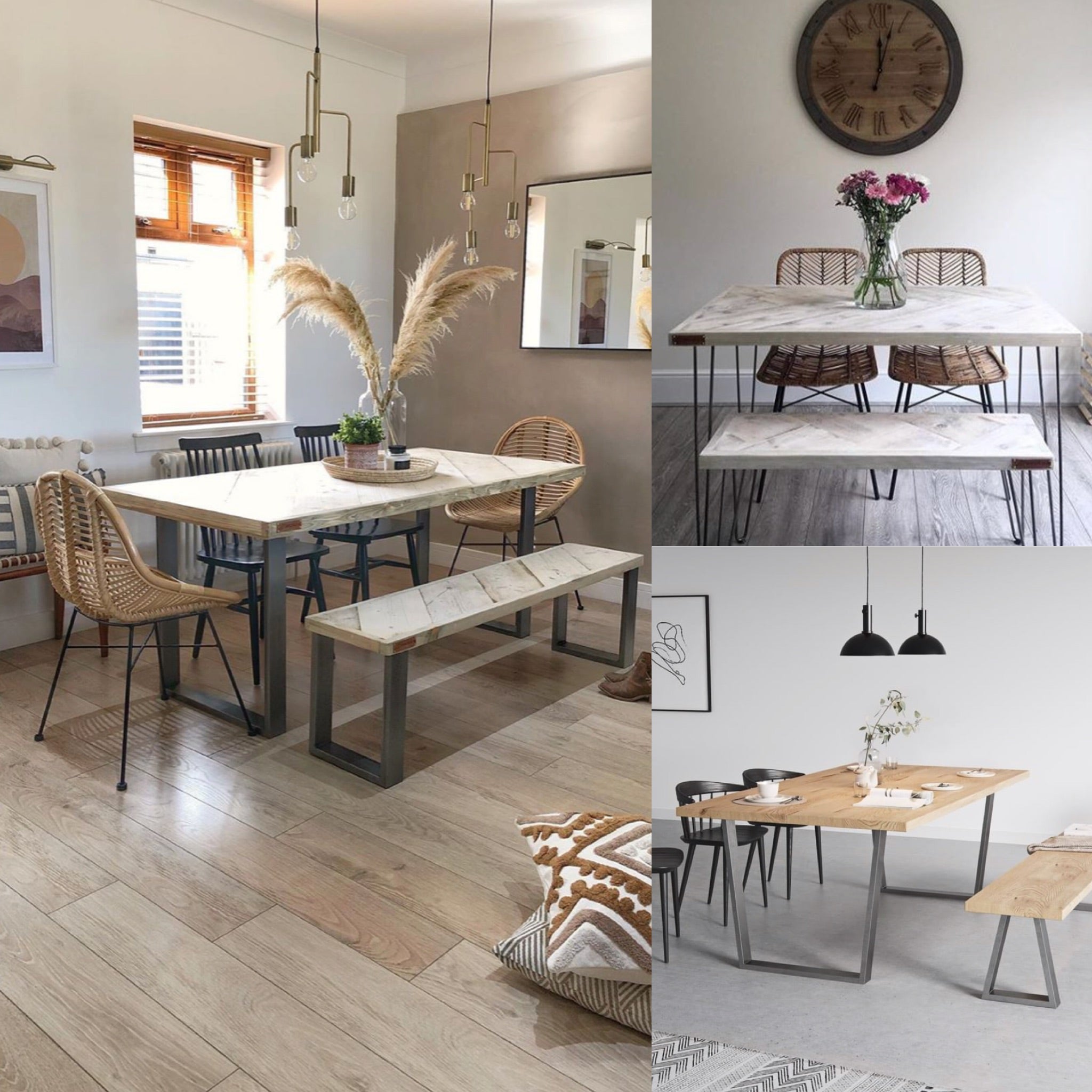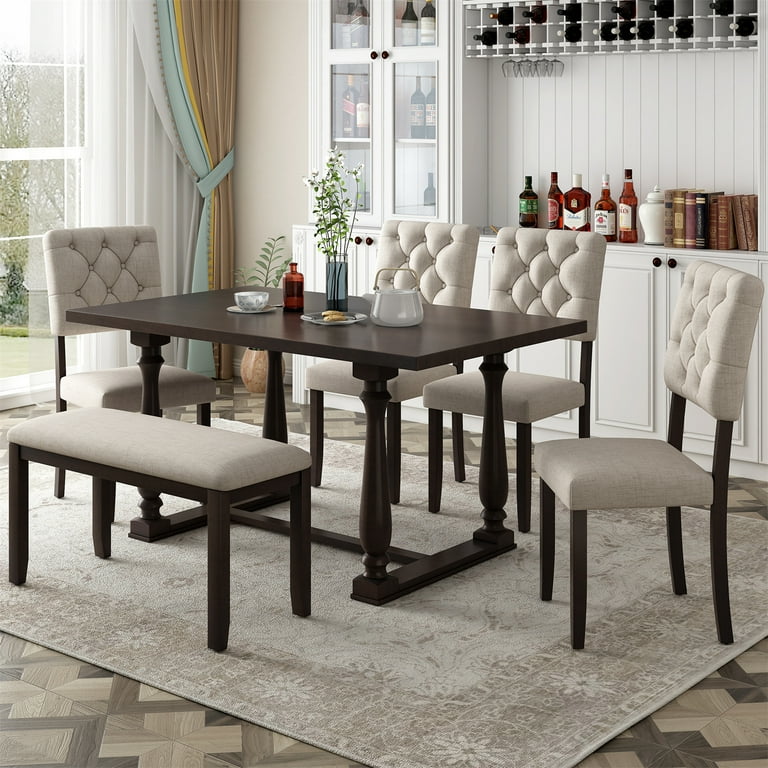Specialist Tips for Installing Dining Room Table Legs for Optimum Stability
When it pertains to setting up eating room table legs, achieving maximum stability is paramount for both performance and aesthetics. The process starts with picking the right materials and equipment, complied with by meticulous placement and consideration of weight circulation. Each action plays a crucial function in guaranteeing that the ended up product stands up to daily usage without compromising safety or layout stability. Nevertheless, recognizing the subtleties of these aspects can considerably influence the total end result. What details techniques can improve security also better?
Select the Right Legs
When picking the appropriate legs for your dining-room table, it is important to think about both capability and aesthetic appeals. The legs you select will substantially influence the overall layout and stability of the table. Evaluate the table's planned usage; if you expect regular gatherings, stronger legs, such as those made from solid timber or steel, might be a lot more appropriate, as they supply raised longevity and assistance.
Common eating tables typically range from 28 to 30 inches in height, so make certain the legs line up with this requirement for convenience. Tapered legs can add a modern touch, while transformed legs could share a much more timeless aesthetic.

Select Appropriate Equipment
Exactly how can the best hardware boost the stability and long life of your eating room table? The choice of ideal hardware is vital to making sure that the legs of your table are securely affixed and able to endure routine usage. Top notch screws, bolts, and brackets provide the essential stamina to support the weight of the table, as well as any type of added lots placed upon it throughout celebrations or dishes.
When picking screws, choose those made from sturdy materials such as stainless steel or brass, which withstand deterioration and maintain honesty over time. The length of the screws is equally essential; they must penetrate deeply into the table's structure without jeopardizing stability. For bolted links, consider making use of lock washing machines to avoid loosening up due to vibration or movement.
Additionally, using corner brackets can include additional support, especially for larger tables or those with larger tops. These braces distribute weight equally and assist maintain the table's form. Guaranteeing that the hardware you select is appropriate for the specific products of your table will certainly even more boost its total stability and longevity, permitting you to appreciate your dining experience for several years to come.
Ensure Proper Placement
Appropriate alignment of eating room table legs is important for both visual allure and practical stability. Misaligned legs can cause an unequal tabletop, which might not just be visually uninviting but additionally jeopardize the table's use. To achieve ideal placement, begin by determining the range from the table's corners to the leg add-on points. This makes sure that each leg is positioned equidistant from the sides, creating a well balanced appearance.
Make use of a level during setup to validate that each leg is perpendicular to the tabletop. This action is vital, as even small disparities can rise into substantial stability problems with time. It is a good idea to note the desired leg placements on the bottom of the table with a pencil or concealing tape prior to safeguarding them. This practice offers as an aesthetic overview, permitting modifications as required.
In addition, double-check the alignment after the first screws are tightened, as adjustments may be required before completely protecting the equipment. By focusing on proper positioning, you not just boost the table's total design however likewise make certain that it remains functional and steady for several years to come.

Consider Weight Circulation
After making certain correct positioning of the dining room table legs, it is necessary to think about weight circulation to boost stability and functionality. dining room table legs. Correct weight circulation is vital in avoiding wobbling and making certain that the table can sustain its designated load without danger of tipping or breaking down
When positioning the legs, ensure they are placed at equivalent distances from the facility of the table to uniformly distribute the weight across the structure. Think about the weight of the tabletop and any kind of products that will regularly relax on it, such as tabletop devices or ornamental items. Tables with much heavier surface areas must ideally have legs located closer to the edges, as this makes best use of the base of support and minimizes the danger of instability.
Additionally, if the table is meant for usage in a high-traffic area, think about using much heavier products for the legs or adding supporting components, such as cross-bracing or a lower shelf - dining room table legs. These changes can help preserve equilibrium and avoid changing during use. Inevitably, a well-considered weight distribution approach will substantially enhance the table's general performance, guaranteeing it continues to be a attractive and practical focal next page point for your eating space
Test Security Prior To Usage
Testing the stability of the dining space table prior to usage is an important action that ought to not be ignored. Making certain that the table is stable and safe and secure can stop crashes and lengthen the life-span of the furniture. Begin by using mild stress to numerous factors on the table surface area. Push down on the facility and then along the edges, observing any wobbling or moving. Recognize the legs or joints that might call for change. if the table reveals instability.
Following, inspect that all fasteners and screws are tightened properly. Loosened links can cause instability and prospective damages in time. If required, use timber glue on joints to enhance security, making certain to enable appropriate drying time.

Verdict
Finally, the installment of dining-room table legs requires cautious factor to consider of materials, equipment, alignment, and weight distribution to attain maximum security. By selecting strong legs and top notch fasteners, making sure accurate placement, and distributing weight equally, the architectural honesty of the table can be substantially boosted. Conducting a security examination before regular use look at these guys better ensures that the table will stand up to everyday pressures, thus supplying a risk-free and trusted eating experience.
When it comes to installing dining space table legs, accomplishing maximum stability is paramount for both capability and aesthetic appeals. The legs you pick will substantially influence the total layout and security of the table (dining room table legs). Typical eating tables commonly vary from 28 to 30 inches in elevation, so make certain the legs straighten with this criterion for convenience.Appropriate positioning of dining space table legs is necessary for both visual charm and practical stability.In final thought, the installation of dining room table legs that site requires cautious factor to consider of materials, hardware, weight, and positioning distribution to attain optimum security